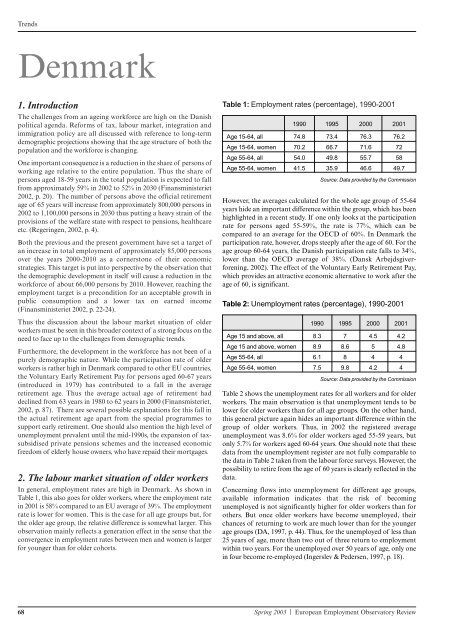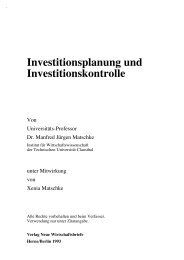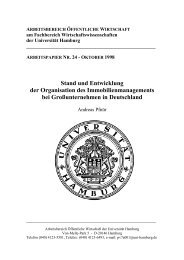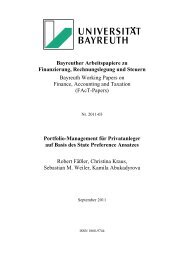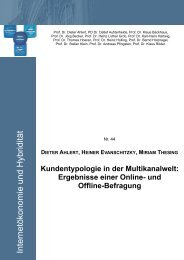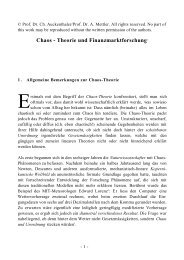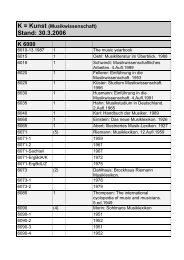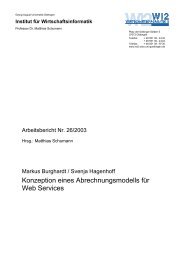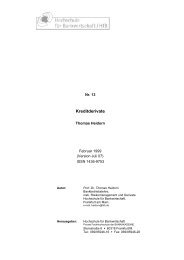FRANCE The
FRANCE The
FRANCE The
You also want an ePaper? Increase the reach of your titles
YUMPU automatically turns print PDFs into web optimized ePapers that Google loves.
Trends<br />
Denmark<br />
1. Introduction<br />
<strong>The</strong> challenges from an ageing workforce are high on the Danish<br />
political agenda. Reforms of tax, labour market, integration and<br />
immigration policy are all discussed with reference to long-term<br />
demographic projections showing that the age structure of both the<br />
population and the workforce is changing.<br />
One important consequence is a reduction in the share of persons of<br />
working age relative to the entire population. Thus the share of<br />
persons aged 18-59 years in the total population is expected to fall<br />
from approximately 59% in 2002 to 52% in 2030 (Finansministeriet<br />
2002, p. 20). <strong>The</strong> number of persons above the official retirement<br />
age of 65 years will increase from approximately 800,000 persons in<br />
2002 to 1,100,000 persons in 2030 thus putting a heavy strain of the<br />
provisions of the welfare state with respect to pensions, healthcare<br />
etc. (Regeringen, 2002, p. 4).<br />
Both the previous and the present government have set a target of<br />
an increase in total employment of approximately 85,000 persons<br />
over the years 2000-2010 as a cornerstone of their economic<br />
strategies. This target is put into perspective by the observation that<br />
the demographic development in itself will cause a reduction in the<br />
workforce of about 66,000 persons by 2010. However, reaching the<br />
employment target is a precondition for an acceptable growth in<br />
public consumption and a lower tax on earned income<br />
(Finansministeriet 2002, p. 22-24).<br />
Thus the discussion about the labour market situation of older<br />
workers must be seen in this broader context of a strong focus on the<br />
need to face up to the challenges from demographic trends.<br />
Furthermore, the development in the workforce has not been of a<br />
purely demographic nature. While the participation rate of older<br />
workers is rather high in Denmark compared to other EU countries,<br />
the Voluntary Early Retirement Pay for persons aged 60-67 years<br />
(introduced in 1979) has contributed to a fall in the average<br />
retirement age. Thus the average actual age of retirement had<br />
declined from 63 years in 1980 to 62 years in 2000 (Finansmisteriet,<br />
2002, p. 87). <strong>The</strong>re are several possible explanations for this fall in<br />
the actual retirement age apart from the special programmes to<br />
support early retirement. One should also mention the high level of<br />
unemployment prevalent until the mid-1990s, the expansion of taxsubsidised<br />
private pensions schemes and the increased economic<br />
freedom of elderly house owners, who have repaid their mortgages.<br />
2. <strong>The</strong> labour market situation of older workers<br />
In general, employment rates are high in Denmark. As shown in<br />
Table 1, this also goes for older workers, where the employment rate<br />
in 2001 is 58% compared to an EU average of 39%. <strong>The</strong> employment<br />
rate is lower for women. This is the case for all age groups but, for<br />
the older age group, the relative difference is somewhat larger. This<br />
observation mainly reflects a generation effect in the sense that the<br />
convergence in employment rates between men and women is larger<br />
for younger than for older cohorts.<br />
Table 1: Employment rates (percentage), 1990-2001<br />
1990 1995 2000 2001<br />
Age 15-64, all 74.8 73.4 76.3 76.2<br />
Age 15-64, women 70.2 66.7 71.6 72<br />
Age 55-64, all 54.0 49.8 55.7 58<br />
Age 55-64, women 41.5 35.9 46.6 49.7<br />
Source: Data provided by the Commission<br />
However, the averages calculated for the whole age group of 55-64<br />
years hide an important difference within the group, which has been<br />
highlighted in a recent study. If one only looks at the participation<br />
rate for persons aged 55-59%, the rate is 77%, which can be<br />
compared to an average for the OECD of 60%. In Denmark the<br />
participation rate, however, drops steeply after the age of 60. For the<br />
age group 60-64 years, the Danish participation rate falls to 34%,<br />
lower than the OECD average of 38%. (Dansk Arbejdsgiverforening,<br />
2002). <strong>The</strong> effect of the Voluntary Early Retirement Pay,<br />
which provides an attractive economic alternative to work after the<br />
age of 60, is significant.<br />
Table 2: Unemployment rates (percentage), 1990-2001<br />
1990 1995 2000 2001<br />
Age 15 and above, all 8.3 7 4.5 4.2<br />
Age 15 and above, women 8.9 8.6 5 4.8<br />
Age 55-64, all 6.1 8 4 4<br />
Age 55-64, women 7.5 9.8 4.2 4<br />
Source: Data provided by the Commission<br />
Table 2 shows the unemployment rates for all workers and for older<br />
workers. <strong>The</strong> main observation is that unemployment tends to be<br />
lower for older workers than for all age groups. On the other hand,<br />
this general picture again hides an important difference within the<br />
group of older workers. Thus, in 2002 the registered average<br />
unemployment was 8.6% for older workers aged 55-59 years, but<br />
only 5.7% for workers aged 60-64 years. One should note that these<br />
data from the unemployment register are not fully comparable to<br />
the data in Table 2 taken from the labour force surveys. However, the<br />
possibility to retire from the age of 60 years is clearly reflected in the<br />
data.<br />
Concerning flows into unemployment for different age groups,<br />
available information indicates that the risk of becoming<br />
unemployed is not significantly higher for older workers than for<br />
others. But once older workers have become unemployed, their<br />
chances of returning to work are much lower than for the younger<br />
age groups (DA, 1997, p. 44). Thus, for the unemployed of less than<br />
25 years of age, more than two out of three return to employment<br />
within two years. For the unemployed over 50 years of age, only one<br />
in four become re-employed (Ingerslev & Pedersen, 1997, p. 18).<br />
68 Spring 2003 | European Employment Observatory Review


